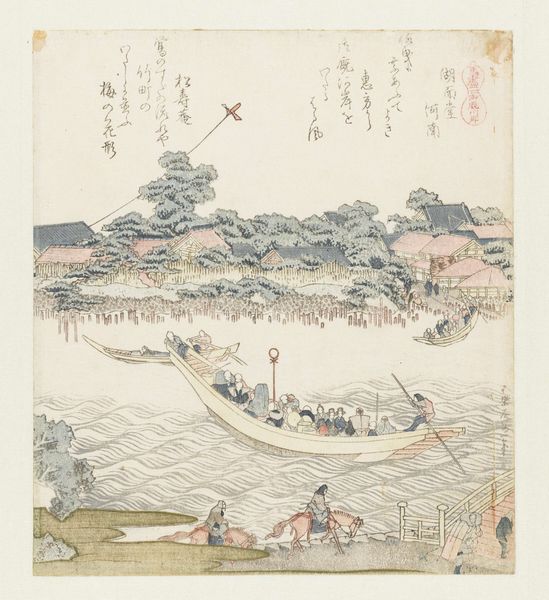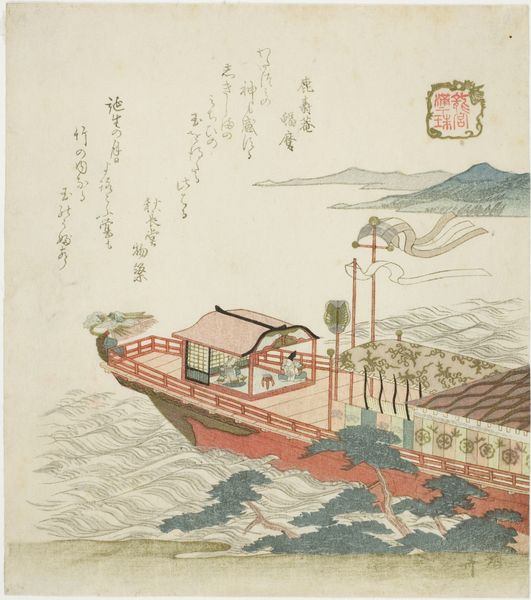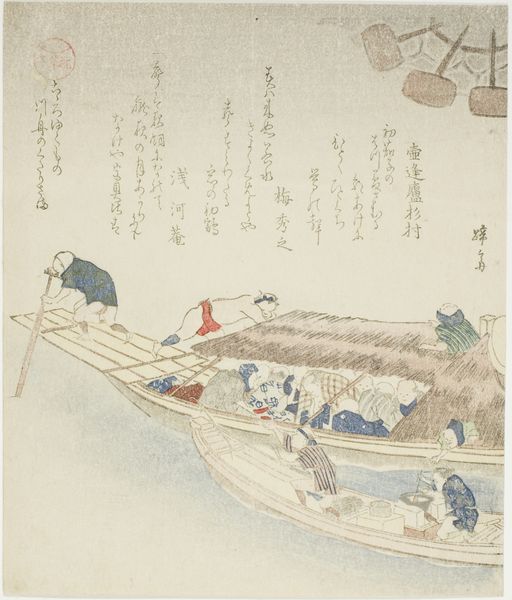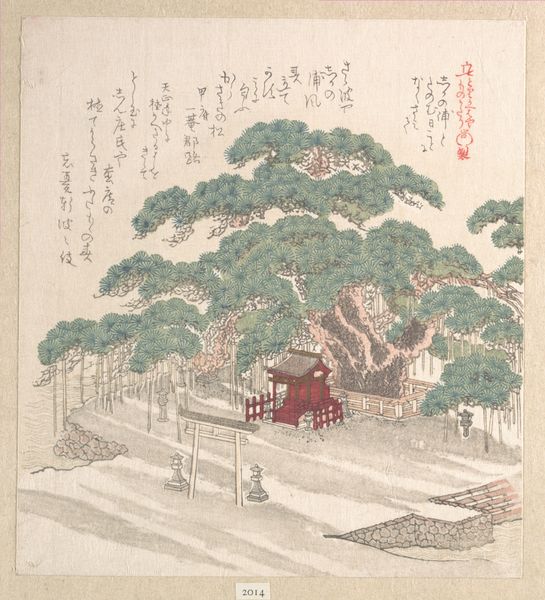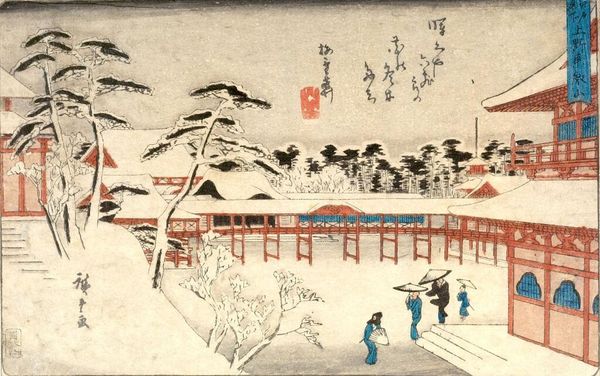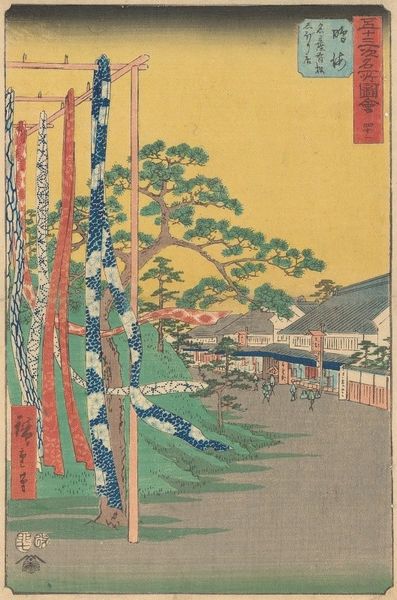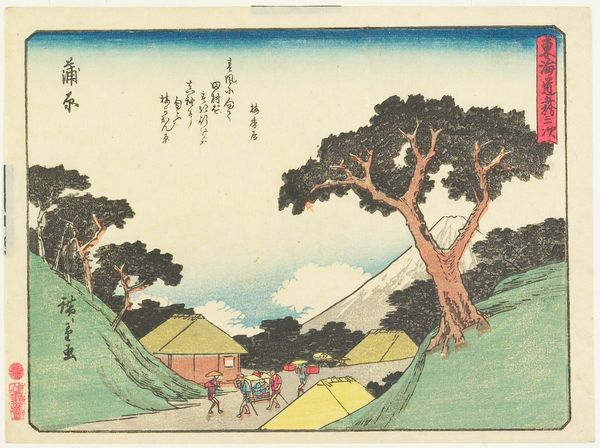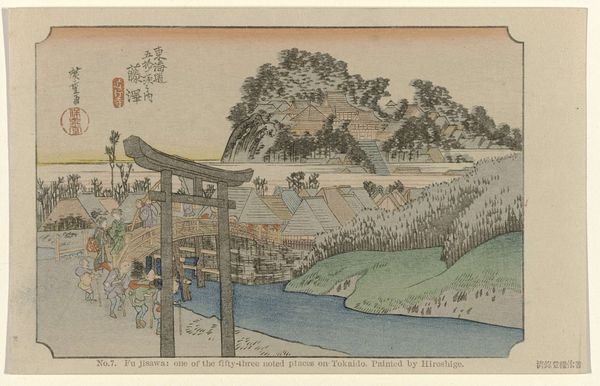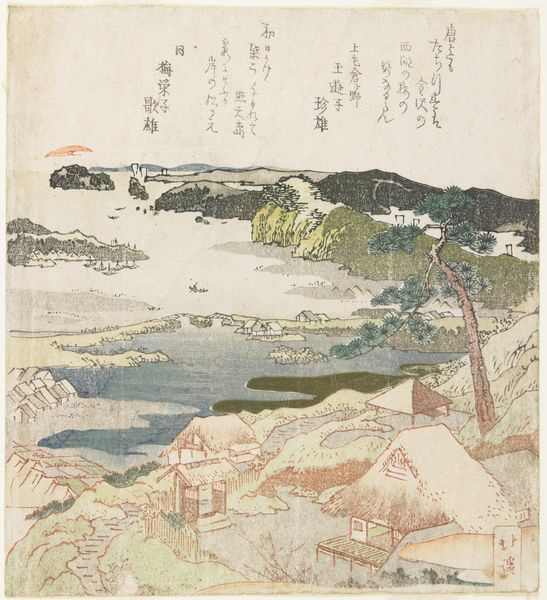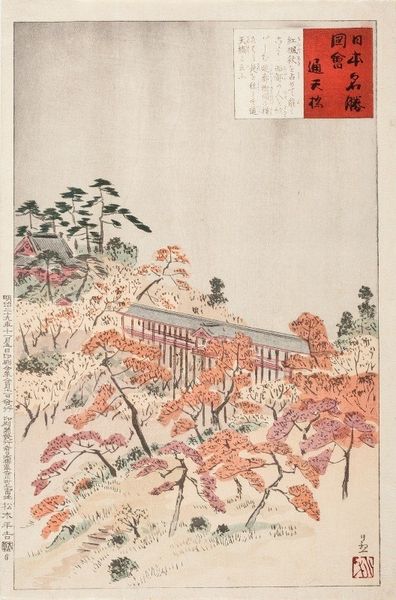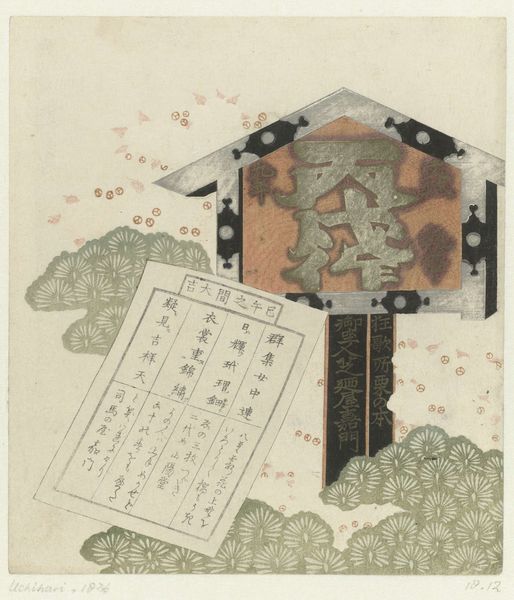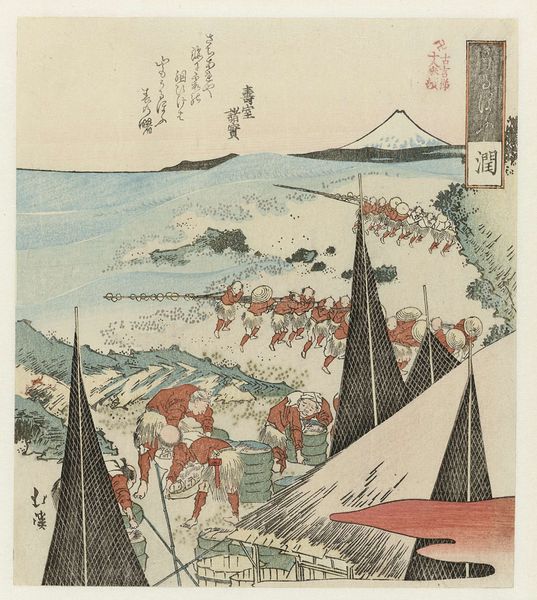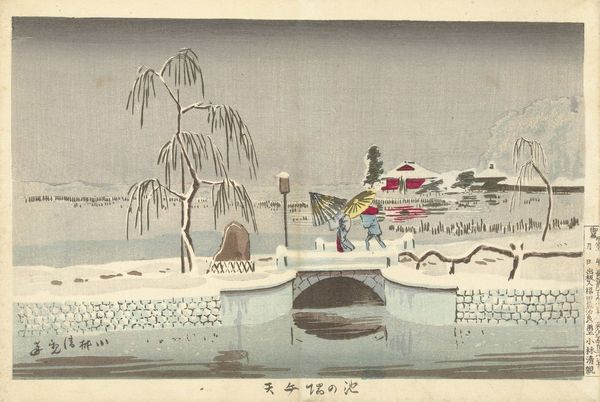
print, woodblock-print
# print
#
asian-art
#
landscape
#
ukiyo-e
#
woodblock-print
Dimensions: height 208 mm, width 181 mm
Copyright: Rijks Museum: Open Domain
Curator: Hokusai’s woodblock print, “Het paardenheiligdom Komagatadô,” created around 1822, captures a serene slice of Edo-period life, currently held at the Rijksmuseum. Editor: The color palette is quite calming at first glance; subdued blues, pinks and greens give this landscape print an air of tranquility, although there's an awful lot happening within its composition. Curator: Indeed, let’s break that down. Notice how Hokusai employs distinct zones—the bridge in the foreground, the boats mid-ground, leading to the shrine architecture in the distance, establishing a sophisticated spatial order, each carefully layered with its own textural pattern and detailing. It is the formal harmony which elevates the imagery from that of a mere documentation of the space into one where all the forms exist as echoes of one another. Editor: I'm struck by the material reality of this piece. We're looking at ink on paper, meticulously carved woodblocks leaving impressions depicting a religious site; then there are all the laborers pushing their heavy loads across the bridge, as others do the same on water. There’s a very grounded sense of work and production contrasted with this serene place. Curator: And perhaps Hokusai’s work speaks to the inherent spirituality found in ordinary labor. The layering of symbolism—religious structure and landscape—reflects philosophical views about interconnectedness between physical action and higher purpose. Editor: Right, and in that context, consider the accessibility and reproduction of the woodblock print itself. This allowed ordinary citizens, and not just elite nobles or patrons, to own depictions of beautiful or spiritually relevant places, changing not only how the image itself functions but who has access. Curator: Absolutely, thus Hokusai's choices reflect both artistic expression, historical context and intellectual meaning. The layering within creates the work as both art piece and documentation. Editor: Yes, a great reminder that art always resides within webs of exchange and power relations and processes, influencing perception as well as access to culture. Curator: I leave appreciating the considered use of color theory, composition as well as subject matter that elevate the artwork as its lasting mark on art. Editor: Exactly, seeing not just pretty imagery, but its deep resonance throughout its complex methods and material construction changes your perspective, doesn't it?
Comments
No comments
Be the first to comment and join the conversation on the ultimate creative platform.
